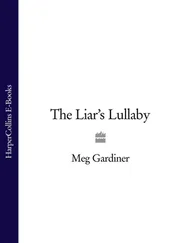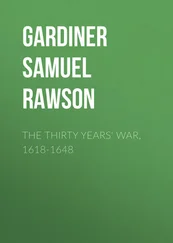If the hours which are designated as leisure time are an important part of the life of the community, they are an especially important part of the life of that portion of the community who happens to have no work to do. For a man who has a job, the day’s activities centre round that job. It takes the greatest share of his time. It eliminates the necessity of constant choices concerning what shall be done with his day. It provides him with the means of enjoying his spare time at the various forms of voluntary or commercial amusement fairly regularly and dressed in clothes of which he need not be ashamed.
With the man out of a job, it is different …
E. Wight Bakke, The Unemployed Man: A Social Study (1934)
He could make marvellous things with his hands. He once made a church from about five thousand matchsticks … I think it took him two years … He was always having to invent something … an alarm clock, that was a thing of the past, and he sat for weeks and weeks … fiddling with his tools and pieces of metal and we had a cuckoo clock … it occupied his mind for weeks.
Interview by Kate Nicholas with Mrs Bell, the daughter of a long-term unemployed Teesside man
‘What animals cause you the most worry?’ the unemployed Nottingham miner George Tomlinson once asked a gamekeeper: ‘I was thinking of stoats, weasels, foxes and their like. But he answered sourly, “miners”.’ Tomlinson ‘knew well enough what he meant, for the collier when he sets his hand to it is the most skilful of poachers. I loved to watch them go out in the evening, slipping merrily along a forest path [Tomlinson lived near Robin Hood’s Sherwood Forest], single file like Indian braves but not a bit like Indians in their appearance. Old slouch hats, short coats with big bulging pockets, a cosh pulled down the back of the coat and sticking out above their heads.’
‘Rabbits were the thing! And a good dog was half the battle.’ George Bestford, an unemployed Durham miner whose father had come north when the Cornish mining industry collapsed, had ‘a good whippet! I think we’d have starved if it hadn’t been for the dog. Away he’d go and back with a rabbit. They always had the game keepers out and they were there watching to make sure you didn’t get any of their game … I was lucky because I was well in with a farmer and he used to let me have half what we caught on his land. So on a moonlit night — away with the dogs and catch a few rabbits! Some of the farmers were very good. They would give you some potatoes or a turnip. But some would give you nothing … We used to pinch off them.’
A rabbit for the pot would supplement the endless dole diet of bread and margarine, and suet: ‘Every miner’s house used suet. That was like the basic. Every day you’d have something with suet in for the main meal of the day. To fill you up. You’d buy a big piece of suet from the butcher’s for tuppence and every day you grated a bit of suet into the flour. Monday’s dinner was always a plain suet pudding with what was left from Sunday’s dinner. Another day was “pot pie” we called it. Then “Spotted Dick” with currants in it or you’d roll it out and put blackberries in the middle, tie a cloth around it and put it in the pan.’
It was not just rabbits that nature provided — or rather that the men took. Anything was fair game for scavenging for hungry families. ‘We used to live off the land for quite a number of years,’ explained a Derbyshire miner. ‘You had to … it were a matter of getting by. If we were hungry we used to go into the field with a bit of a broken knife and find pignuts and scrape them out and put a bit of salt on … we used to go round scrounging what we could get. If we saw a barrow full of peas, we’d come back with a jersey full of peas and that were it … we used to eat owt … We used to go out and get rabbits and anything, owt what we could catch … pigeons, pheasant and ducks off the canal … Sometimes we used to pull mangols [sic] and bring them ’ome and stew ’em … we had a gaddo [catapult], we got quite expert … wood pigeons, we used to wait for dusk for them to settle in the trees to roost and then we’d knock them out of the trees.’
In the mid-nineteenth century the political philosopher John Stuart Mill had claimed that allotments were ‘a contrivance to compensate the labourer for the insufficiency of his wages by giving him something else as a supplement to them’: a way, in fact, of ‘making people grow their own poor rate’. Little had changed nearly a hundred years later. The notion that ‘the hungry could grow their own foods and obtain a living from their own methods’ was a throwback to Gerrard Winstanley and the Diggers of the Civil War, but it gained a new relevance during the Depression: an allotment could provide potatoes, carrots, cabbages and other vegetables to eke out family meals. The campaign to make Britain more self-sufficient in food production during the First World War, when George V had directed that the geraniums planted around the Queen Victoria memorial opposite Buckingham Palace should be grubbed up and replaced with potatoes and cabbages, had resulted in an astonishing increase in the number of allotments. By 1918 something like 1.5 million allotments dug by a ‘new short-sleeved army numbering over 1,300,000 men and women’ were producing over two million tons of vegetables. The return to its former owners of land requisitioned by the government during the war and the spread of the suburbs, where most houses had gardens, meant that the number of allotments fell during the 1920s, but by the 1930s the Ministry of Agriculture was recording a revival of interest as both the Ministry and local authorities made land available for allotments, particularly in depressed areas, while the Land Settlement Association, whose main aim was to turn the urban unemployed into smallholders, encouraged not only the cultivation of produce on small plots, but also the keeping of pigs and chickens to provide food and manure.
In a prefiguration of the ‘Dig for Victory’ campaign during the Second World War, allotments were dug on wasteland and on roadside and railway banks, wherever the soil might yield food for the table. They clung to the steep, scoured hillsides of the Rhondda Valley, perched on riverbanks prone to flooding and huddled under the ugly shadow of gasworks — anywhere the land could not be used more profitably for some other activity. Working his allotment could be a satisfying occupation for a man who felt that was what he no longer had: out of the house, in the fresh air and using his strength to dig. Many took great pride in what they grew on their allotment or in their back garden — and many colliery houses had quite large back gardens. Charles Graves, a rather patrician journalist (and the brother of the poet Robert Graves), paid a visit to Ollerton in the Midlands, ‘in the heart of the Dukeries’ (a large tract of Nottinghamshire in private hands which once contained the estates of no fewer than five dukes), for the society magazine the Sphere . He reported: ‘All have gardens … work in the mines is limited to three days a week … All of them like to … grow their own vegetables … And the Garden Holders Association among the miners is a very powerful organisation with annual cups and prizes to be won. Potatoes, cabbages, carrots all grow well at Ollerton. So do onions and woe betide the man who is caught pilfering his neighbour’s celery.’
But pilfer they did: ‘There were a hell of lot of allotments. And there used to be a lot of knocking off’ in Ashton-under-Lyne. ‘They used to be up around three or four in the morning going on the Moss pinching lettuce and celery, anything to make a meal. The Moss was more or less peat. That’s why they’ve never built on it.’ Jack Shaw’s father, an unemployed miner, ‘had an allotment on the Moss. He paid a pound a year. It was just a matter of growing vegetables for our house. Others had big ones and it would be like a full time job.’
Читать дальше












